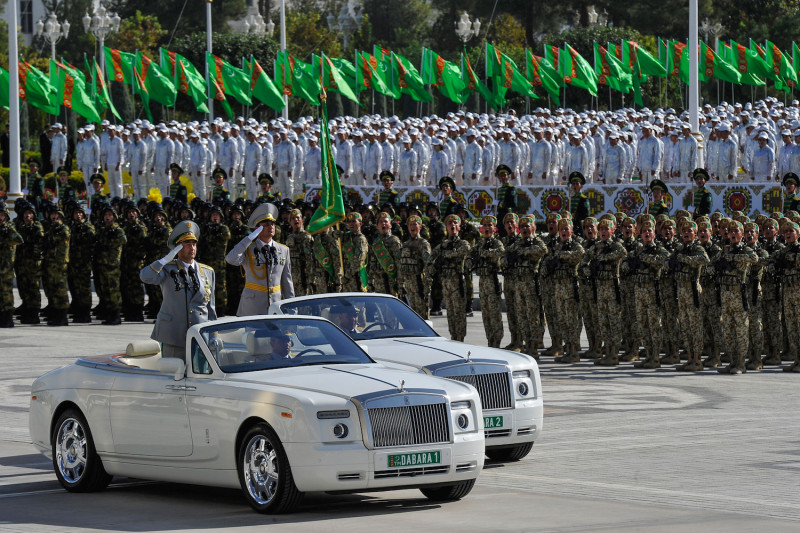Countries
Solidarity campaigns
The World’s Worst Country for Journalists

After the collapse of the Soviet Union, Turkmenistan remained isolated from the rest of the world under the brutal and eccentric rule of former President Saparmurat Niyazov. He renamed the months of the year after his family members, cracked down on dissent, and installed a statue of himself that rotates to always face the sun. Little has changed since current President Gurbanguly Berdimuhamedow came to power in 2006 following Niyazov’s death. While North Korea has allowed foreign journalists to enter the country, Turkmenistan remains closed.
Foreign Policy spoke with Ruslan Myatiev, the founder and editor of Alternative Turkmenistan News, about the lengths he goes to to protect his reporters and sources and the Western tech companies that are providing online surveillance training to Turkmenistan’s formidable security services. Myatiev runs the site from the Netherlands, where he claimed asylum in 2010.
Foreign Policy: So what’s the media landscape like right now in Turkmenistan?
Ruslan Myatiev: There is no media landscape in Turkmenistan, let’s put it that way. There is a bunch of state TV channels, newspapers, and radio stations, and they all convey the official line. The role of the media is to tell the news, but [in Turkmenistan] we have cases where floods have taken over entire cities and nobody reports about it. We have accidents. We have murders. We have corrupt officials that are put in jail for corruption, and nobody reports about it. If you take any Turkmen newspaper, they think the most interesting story is the president visiting a horse race or playing with puppies.
It’s propaganda. It’s the worst example of state propaganda. They are making him virtually a god. The saddest thing is that the Turkmen society has lived through this for many decades already. Entire generations have grown up with this. They don’t know that a state can operate otherwise. They don’t know that the media can have a different approach.
I’m hoping that a website like mine and others will turn these things around. We’re trying to get to the youth to tell them, “Look, guys, there is a different vision, there is a different point of view.” I don’t know how successful we are, because all of these websites that are focused on Turkmenistan are blocked in Turkmenistan. All social media sites are blocked in Turkmenistan. You can’t access Instagram. You can’t access YouTube, Twitter, Facebook. Even Russian language platforms like VKontakte or Odnoklassniki are all blocked.
There is only one messenger that works without any filters. It’s called Imo. I never interact with my sources, readers, or reporters through this messenger because it’s—if it works in Turkmenistan, for God’s sake, it’s monitored.
FP: What kind of lengths do you go to to protect your reporters and your sources?
RM: The harsh circumstances of Turkmenistan push us to develop very sophisticated ways of communication, ways of collecting information. We cannot really break the news. … The entire country, the entire [capital] city of Ashgabat is filled with surveillance cameras. And we cannot now post a photo in an article of something that happened yesterday, or today, or even a week ago. Because the security services look at the photo, identify the place where it was taken, look for surveillance cameras in that area, and then they go and play back the footage to try to identify who took that photo.
Source: Foreignpolicy
